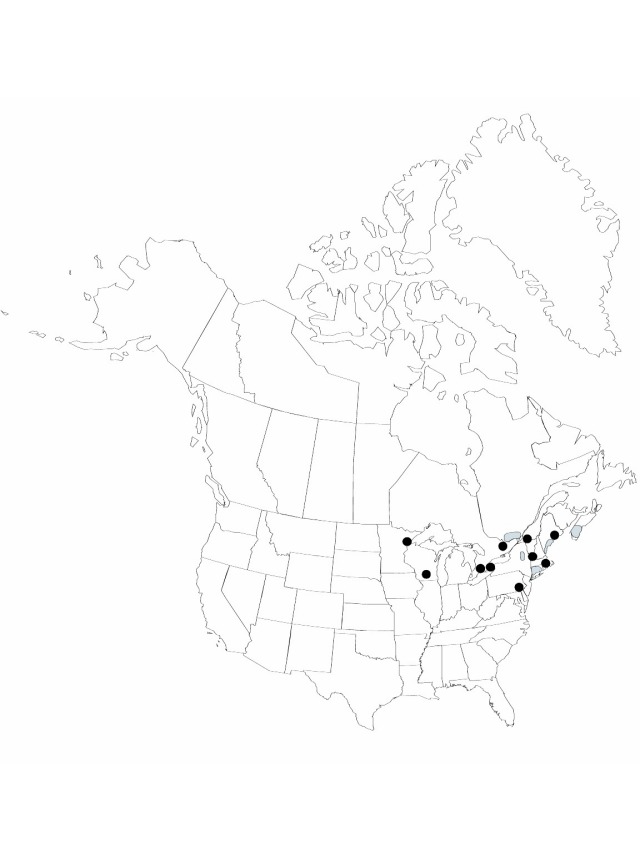Luzula luzuloides subsp. luzuloides
Rhizomes slender (1–1.5 mm wide). Stolons 1–1.5 mm wide. Culms cespitose, 45–70 cm. Leaves: sheath throat densely ciliate; basal leaf blade to 30 cm × 7 mm, densely ciliate; cauline leaf blade long-attenuate to thin apex, sparsely ciliate. Inflorescences anthelate; proximal inflorescence bract leaflike, ± equaling inflorescence length, apex attenuate; bracts brownish to clear, apex lacerate; bracteole margins entire to dentate to scarcely ciliate. Flowers in clusters of 2–8; tepals whitish to pinkish; outer whorl keeled, 1.7–2.1 mm; inner whorl 2.2–3 mm; anthers ca. 4 times filament length; stigmas shorter than styles. Capsules reddish, 1.5–1.8 mm; beak 0.4–0.6 mm. Seeds dark brown, shining, ellipsoid, 0.8–1.1 mm; caruncle 0.1–0.2 mm. 2n = 12 (Europe).
Phenology: Flowering and fruiting late spring–summer.
Habitat: Open woods, fields, and lawns
Elevation: 10–300 m
Distribution

Introduced; N.S., Ont., Que., Conn., Maine, Mass., Minn., N.Y., Pa., Vt., Wis., Europe.
Discussion
Selected References
None.